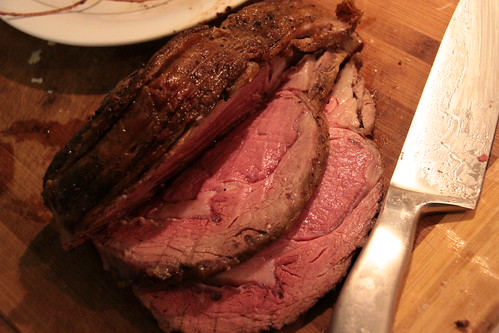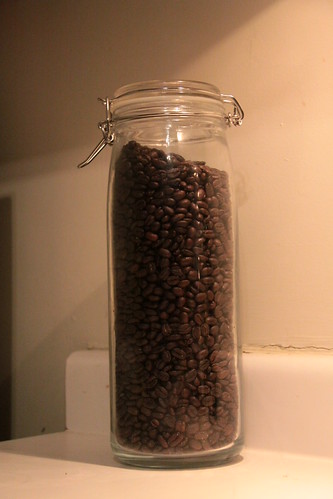We live in an apartment in Toronto – while we are fortunate to have lots of space inside our walls, very little of that is freezer space. My entire freezer consists of the small chest above our fridge and some borrowed space in Markham (about a 30 minute drive from here). This is part of the reason we can so much.
As we cook fairly often at home, I keep a jar of stock open at almost all times. Stock is just a handy staple and something that`s tough to live without. We use it in soup, pasta, to de-glaze pans, stirfrys, cooking rice, steaming anything and so forth.
We cooked a 23+ pound turkey for Xmas. We had plenty of food for our guests and the entire lot feasted on leftovers before leaving us – and more turkey behind. Although I like Turkey soup, eating it right after XMas can amount to 7 or 8 days of nothing but foul. It was time for something different – we made our stock (tips on making great stocks were shared here) and left in a locked pressure cooker outside. The cold weather chilled the stock and separated the fat to the surface while the pressure cooker served to lock raccoons out. We left a plug on the top to further reduce the smell for curious critters.
From there, things were fairly simple. We removed the fat, strained the entire concoction through cheesecloth and brought it back up to heat as we prepped our jars and pressure canner. Hot liquid in hot clean jars before entering the cooker for a steam with 10 pounds of pressure for 20 minutes. Timings were based on the US National Center of Home Preservation (our intro to them is here and their site can be found here). The Canadian Government does not list canning meat or meat products as safe so I am turning to the U.S. Standard as personal preference. Many in the far north and east coast of Canada would scoff at this as preserving meat in jars is a common tool of survival. According to the NCFHP, there is no safe way to preserve this without pressure cooking.

We jarred 4.5 liters (18 cups).
I am so excited to have these 5 jars of stock on the shelf. As we cook with them in coming months, each meal we have will contain a little bit of Holiday Magic and memories of sweet time with friends and family. Preserving, to me, is about far more that what goes into the jars and more about what goes in to what goes in to the jars (it`s a bit of a tongue twister but there is some real sense in that :)).
That`s the final batch of the year. 53 batches, more than 700 jars. It`s almost time for another year and another batch!









